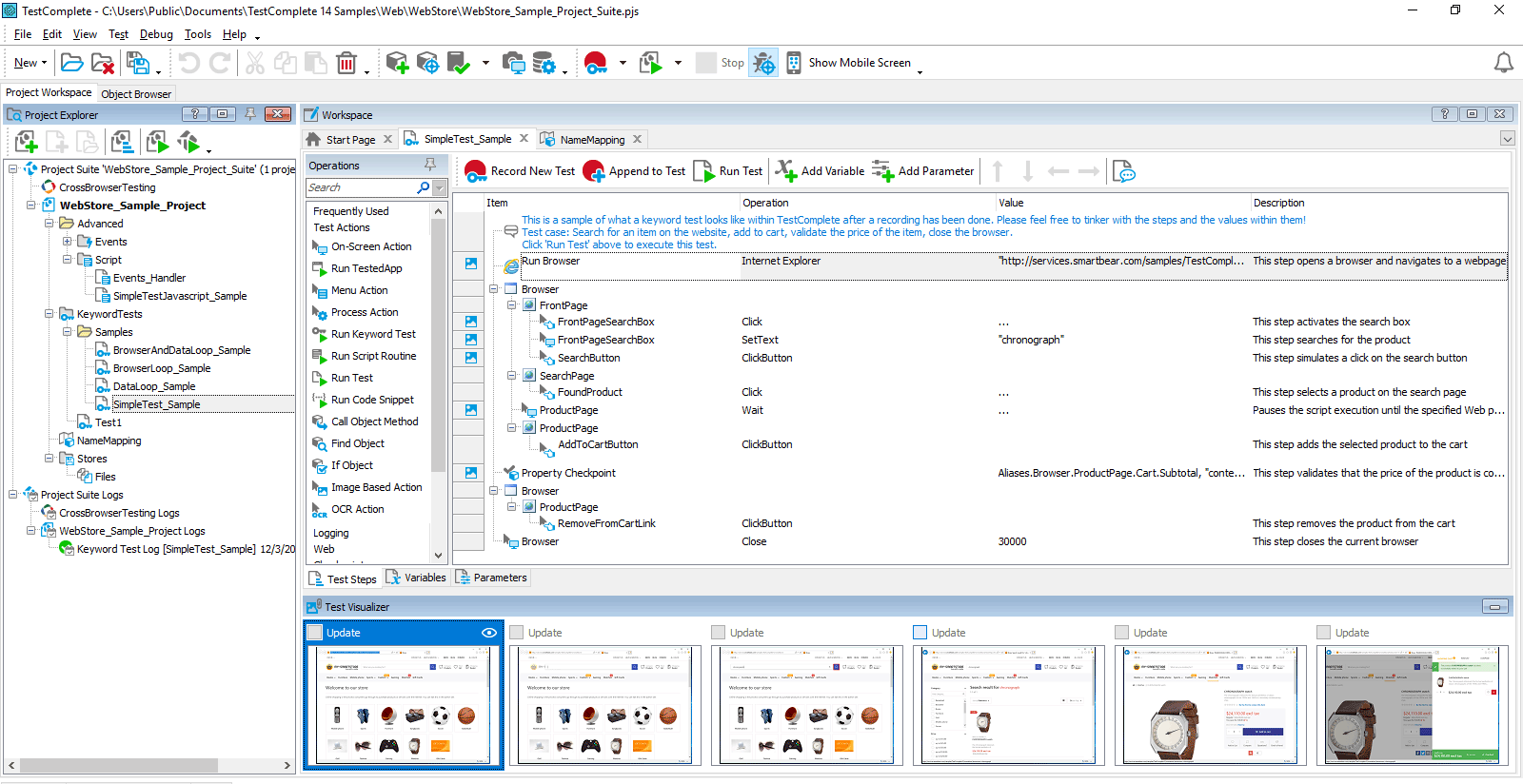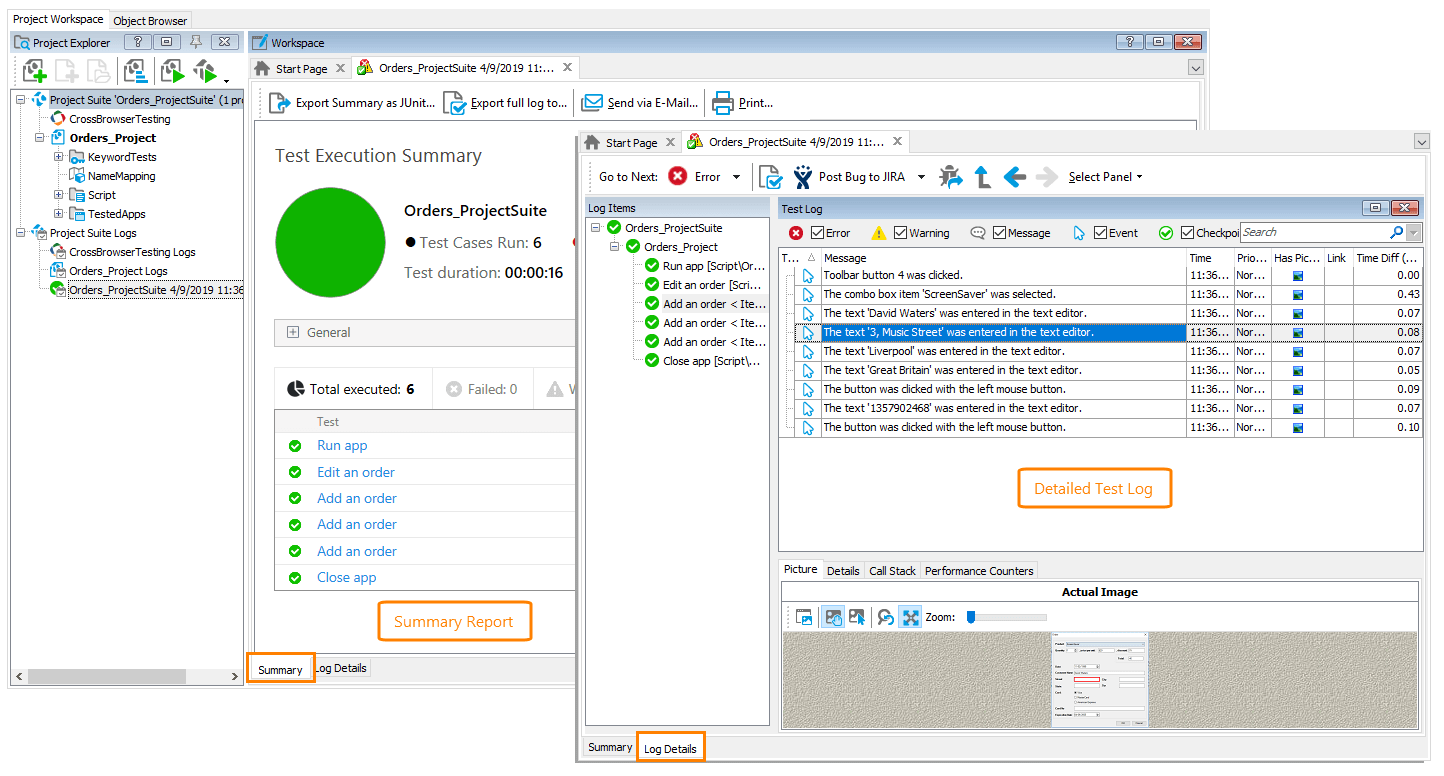Test automation has become an essential part of the software development process. Rather than spending hours conducting manual tests, you can write a script once and execute it with each release. This helps to maximize test coverage and save time, resulting in lower testing costs and a better customer experience.
But which test automation tool should you use? What’s the difference? Let’s compare Selenium with some off-the-shelf test automation solutions to help you decide the best option for your organization.
What Is Selenium & Why Use It?
Selenium is a suite of free and open-source UI test automation tools, including WebDriver, IDE, and Grid.
The most popular tool is WebDriver, which allows you to simulate real-user interactions on web applications. The platform supports popular browsers like Chrome, Edge, Firefox, Safari, and Internet Explorer, and allows you to write tests in JavaScript, Python, Ruby, Java, Kotlin, and C#.
Here's how to setup Selenium in NodeJS:
- Download the npm package with "npm i selenium-webdriver."
- Download the browser drivers you require, such as "GeckoDriver" for Firefox or "ChromeDriver" for Chrome.
- Add the browser drivers to your system PATH.
- Create a test (see below).
- Run the test with "node test.js."
Here's an example of a Selenium WebDriver-powered test courtesy of Mozilla:
You should see an instance of Firefox automatically open, and the test steps sequentially execute.
In practice, many Selenium WebDriver tests run on remote devices with headless browsers (e.g., they don't actually open up a window). Selenium can also run parallel tests and cross-browser executions to reduce execution time and increase test coverage. And the framework is widely supported by CI/CD and reporting tools.
Like Selenium, Appium is another open-source tool that provides testing specifically for mobile applications. Testers can write automated UI tests for native, web-based, and hybrid mobile applications on Android and iOS.
Out-of-the-Box Test Automation Tools
Selenium is the most popular open-source test automation tool, but there are other options to consider for UI testing.
While open-source solutions are plentiful, they sometimes don’t have the power to meet your needs. This is where commercial options (and their enhanced functionality) come in.
For example, TestComplete provides UI test automation for desktop, mobile, web, and packaged applications. It has built-in support for over 500 controls and third-party frameworks, making it a much more robust solution than any single open-source option.
It’s also easier to learn. While it supports many popular scripting languages, the tool also makes it simple for non-technical testers to create and automate tests using record-and-replay. So even if you don’t have an all-technical staff, it’s easier to start testing and build a robust test suite.

TestComplete makes it easy for anyone to create automated tests. Source: TestComplete
Some hybrid solutions also focus on providing cloud support for otherwise free tools. For example, Cypress is a web test automation tool for JavaScript applications but offers the ability to run the tests in Cypress Cloud for $75 per month. These may be practical solutions for organizations that want to streamline their cloud-based tests.
Benefits & Challenges of Each
Many companies choose Selenium rather than using a paid out-of-the-box tool like TestComplete for the initial cost benefits. But while open-source solutions involve less upfront cost, you should consider the total cost of ownership when deciding on the right solution for your organization.
And sometimes, it makes sense to pay more upfront for long term savings in other areas.
Selenium Pros & Cons
- PRO: No upfront or recurring costs
- PRO: Widely supported by third-party tools
- PRO: Large Selenium community
- CON: No support team or free training
- CON: Requires technical expertise
- CON: No desktop or mobile testing capabilities
- CON: Difficult to maintain tests
Commercial Pros & Cons
- PRO: Accessible to non-technical testers
- PRO: Support team ready to assist you
- PRO: Free training and up-to-date documentation
- PRO: Robust tests that are easier to maintain
- PRO: Many solutions in one tool
- CON: Higher upfront and recurring costs
- CON: Code usually isn’t open source
TestComplete Saves You Time
TestComplete is one of the most powerful UI test automation tools on the market, making it easy to improve the quality of desktop, web, mobile, and packaged apps.

TestComplete includes reporting tools and other functionality missing from open-source solutions. Source: TestComplete
Some of the tool’s most significant features include:
- Easy Test Creation – Use the record-and-replay feature to create and execute automated UI tests easily. Record them once and play them back across a wide range of applications.
- Object Recognition – Save time creating and maintaining tests by accurately identifying dynamic UI elements with property-based and AI-powered visual recognition. Manage these objects in a single repository to share them between tests.
- Data-Driven Tests – Separate data from test commands to simplify test maintenance. Run automated tests that simulate user actions over an application with different input data.
- Reporting & Analysis – Access all information on the progress and status of your UI tests from a single interface. You can also integrate with test management solutions, like Zephyr Enterprise, that bring everything under one roof.
- Seamless Integrations – TestComplete integrates with popular CI/CD tools, including Jenkins, Azure DevOps, and others.
TestComplete also comes with free training and support that help from the initial rollout to the day-to-day testing activities. If you have any troubles, the active and vibrant TestComplete community can help answer any questions to make the most out of your testing efforts.
Finally, there’s the integration factor. TestComplete integrates with other SmartBear products like BitBar to scale your UI tests across browsers and devices in the cloud. BitBar provides access to thousands of different browsers and devices in the cloud, ensuring your applications work across every device your customers use.
You can also easily integrate with Zephyr Enterprise for test management and ReadyAPI for all API testing needs.
Look Beyond Price to Get More for Your Money
You have options when choosing a test automation tool, but it pays to look beyond the price when shopping around. Selenium has a lower upfront cost and might be right for technical teams seeking a free solution, no doubt about it.
But out-of-the-box solutions like TestComplete can save you money long term, solve issues quickly with access to support, and get you up and running quickly.
See the difference yourself.